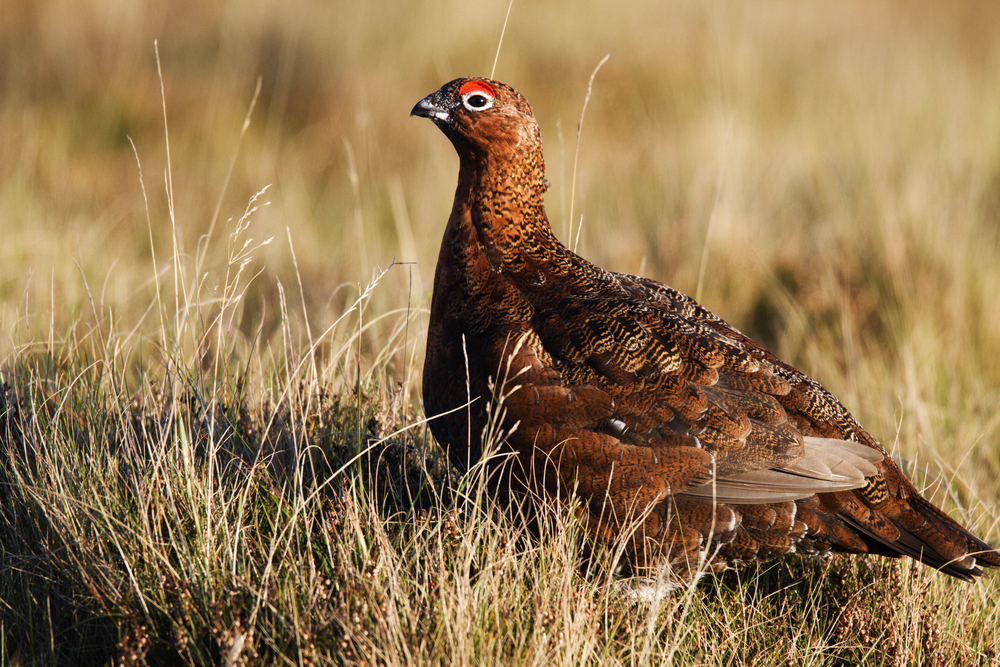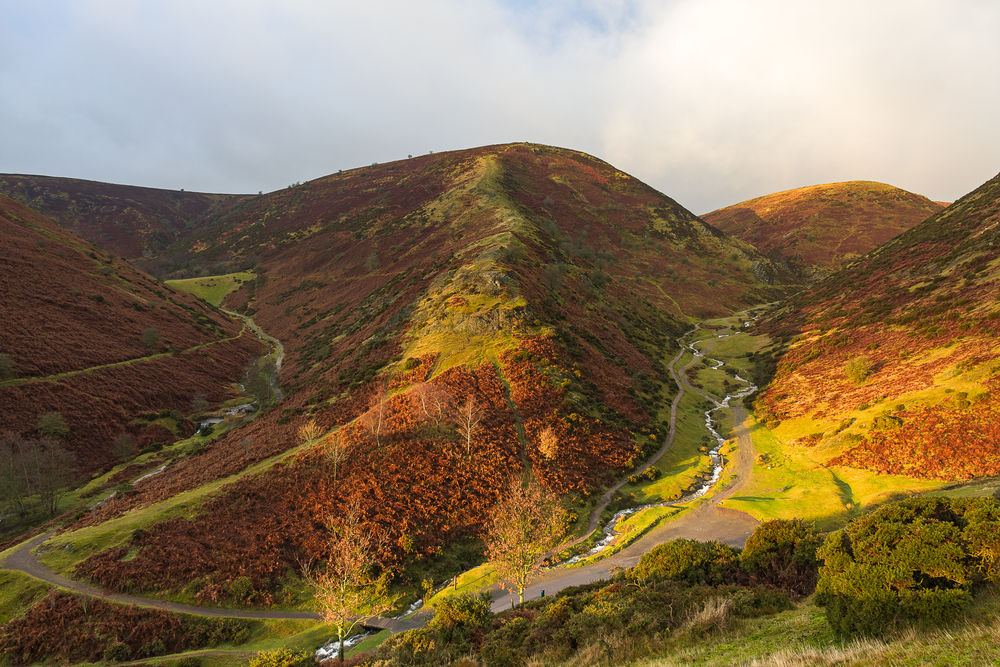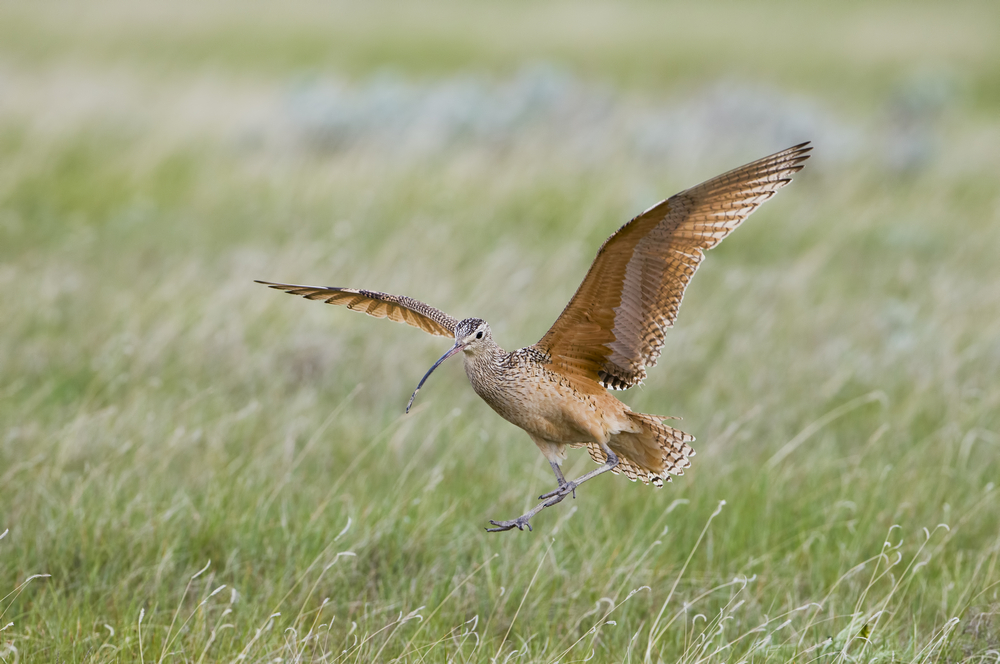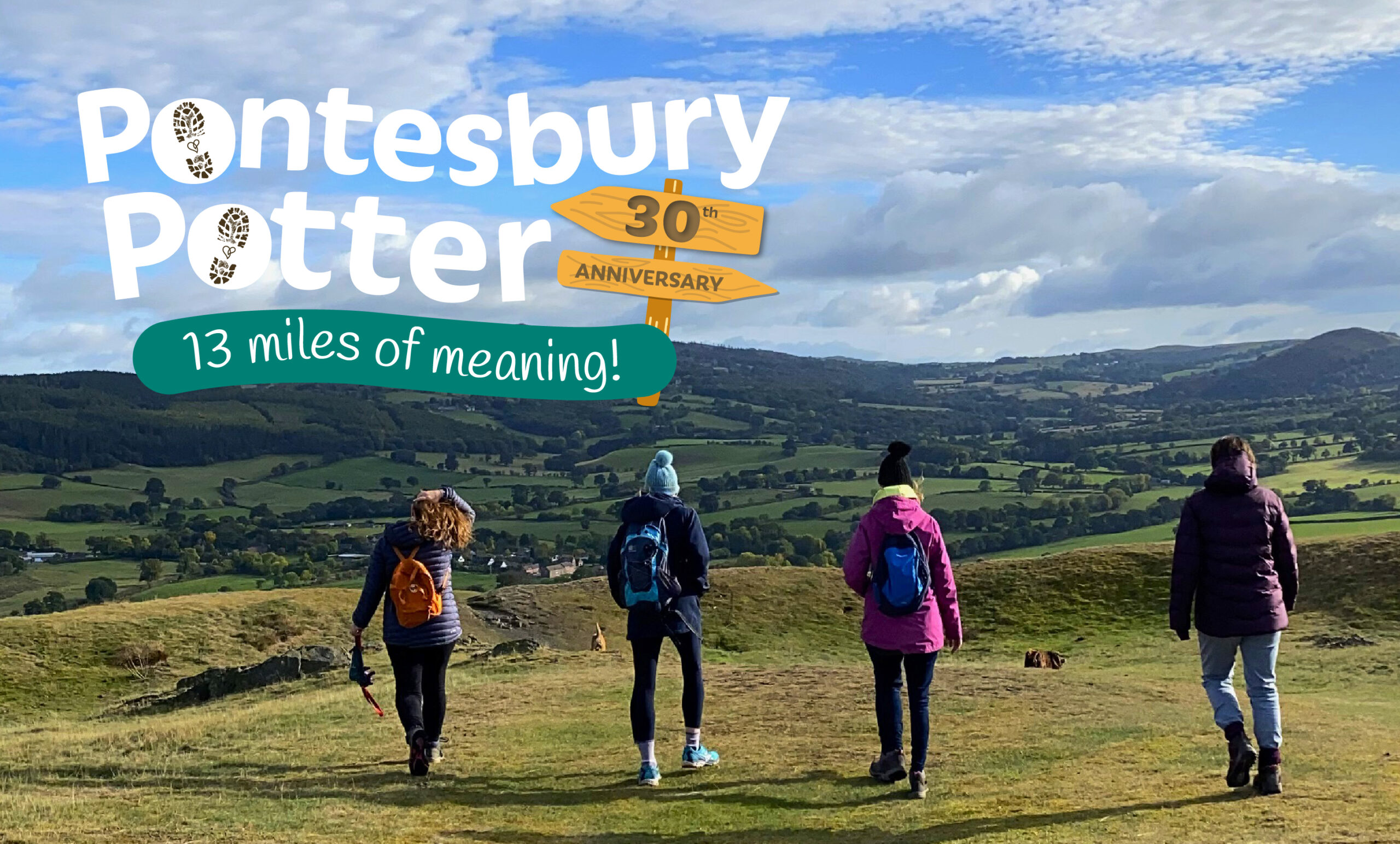Ed Andrews takes us on a quest deep into the hills to monitor the plight of Shropshire’s ground-nesting birds.
 Of all the Shropshire landscapes, the hills display the most dramatic evidence of the arrival of summer. Muddy tracks are transformed into lush springy turf. Wind-swept rowan trees suddenly flush lime green with fresh leaf growth. Bird song cascades down the slopes and bubbles through the valleys.
Of all the Shropshire landscapes, the hills display the most dramatic evidence of the arrival of summer. Muddy tracks are transformed into lush springy turf. Wind-swept rowan trees suddenly flush lime green with fresh leaf growth. Bird song cascades down the slopes and bubbles through the valleys.
It is a mild evening and I am sitting at the side of a footpath that runs along the top of the Long Mynd. I’m here to help monitor the population of a bird synonymous with upland moorland. I have not been at my station long when there is a burst of activity from within the heather. A male red grouse is flying fast and low, just above the vegetation. With a flurry of wingbeats, it flies up steeply and then parachutes down. This is typical territorial behaviour so I mark the location of the sighting on the map I’ve been given.
A varied landscape…
 From my lofty position I can see across the Shropshire plain to the north east, whilst hill country stretches out to the west. I find some grouse feathers near the path. These can reveal a lot about the habits of the birds. The base of the feather is grey and downy, providing warmth for the birds when they battle through the harsh winter months. The tips are speckled dark brown and tan, giving them camouflage amongst the heather.
From my lofty position I can see across the Shropshire plain to the north east, whilst hill country stretches out to the west. I find some grouse feathers near the path. These can reveal a lot about the habits of the birds. The base of the feather is grey and downy, providing warmth for the birds when they battle through the harsh winter months. The tips are speckled dark brown and tan, giving them camouflage amongst the heather.
The evening sky is rippled slate grey and gold. Gentle waves of sound wash over me; the chatter of golden plover and a stonechat, the distant hum of a tractor. The calm is interrupted by a pair of grouse bursting into view. Grouse nest in a shallow scrape on the ground, amongst the heather. The female lays her eggs in May. By the time you read this article, the chicks will have fledged.
I smell burning. Looking behind me, I can see an area of scorched ground. Each winter, the National Trust burn small patches of heather on the hill. This stimulates fresh growth on which the red grouse then feed. The National Trust have organised this survey of the grouse population each year since 2011 to monitor the effectiveness of their habitat management work. The average number of male territories across the Long Mynd is around 60 and the red grouse population seems to be relatively stable. Unfortunately not all birds are thriving amongst these hills.
 The winding road
The winding road
It is an early summer’s morning and once again I’m standing near the summit of the Long Mynd. The signpost directs me down a broad trackway towards Stanbatch. Unlike many modern roads, this track has been created to follow the contours of the land. Through a series of sweeping turns, it weaves down the steep slope towards the valley below. With each bend, a new view opens up. One minute my eyes are drawn out towards Corndon Hill. The next, I am looking along the length of the Long Mynd as it rises up above me like a great breaking wave.
As the track crosses the line from moorland to farmland, I hear the fluting call of a blackbird in a hawthorn tree. A raven cronks overhead and a distant skylark sings; I stand for a while and listen. I have come here to try and find another ground-nesting bird that returns each summer. With each minute that passes, the silence becomes more overpowering. Finally from somewhere in the rush pasture below me, I hear the bubbling call of a curlew. It is brief but glorious – the sound of windy hillsides and untamed wetlands. I don’t think any bird call is more evocative of our wild uplands than the curlew. These skies should be alive with their calls but in 45 minutes, that brief burst is all I hear. Across the Shropshire Hills, our curlews are disappearing.
Protecting the curlew
Curlew Country is a project that is being administered by the Stiperstones and Corndon Landscape Partnership Scheme. During 2015 and 2016, ornithologists observed 30 curlew nests within the Shropshire Hills. Not one chick successfully fledged. This is a frightening statistic and highlights a trend across the UK of declining curlew populations. Research commissioned by the project has shown that, as well as changing farming practises, predation is also contributing towards the loss of our curlews. This year, the project is trialling some fox control measures coupled with protective fencing to try and boost curlew survival rates.
The Shropshire Hills are a rugged landscape but the birds that live there depend on a fragile balance between habitat management, farming pressures and the communities that live there. For red grouse, the balance is tipped in their favour. For our curlew, the future is much less certain.
Do one thing for wildlife this month…
As well as working with farmers on practical curlew conservation, Curlew Country is also engaging members of the public in arts activities and wildlife surveying. To learn more and get involved, please visit the website stiperstonesandcorndon.co.uk/curlewcountry
What’s What! nature expert and Shropshire Council’s Parks and Greenspace Officer Edward Andrews looks at the changing seasons in each issue.
You can follow Ed on Twitter: @shropshirewild






